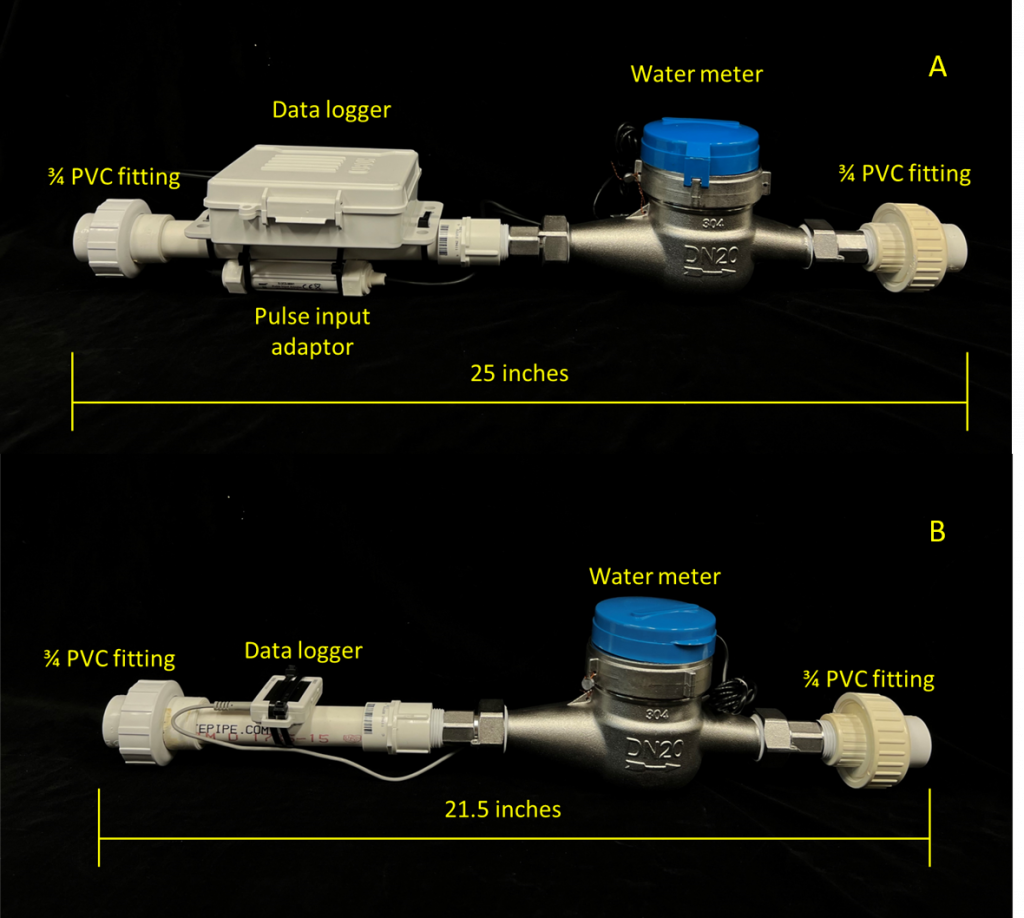Project
Irrigation water quantity and quality to produce ornamental crops in containers
Investigators
Mayra Toro-Herrera (Postdoctoral fellow) and Rosa E. Raudales (Associate Professor & Greenhouse Specialist). Members of the Greenhouse Research and Extension Team in the Plant Science & Landscape Architecture at the University of Connecticut.
Project background
Background and objectives:
The quality of water sources determines irrigation and fertilization practices. In this project, we aim to track water quantity and quality in greenhouses and nurseries in Connecticut. Our goal is to understand how growers adjust their irrigation practices based on the quality and availability of water.
We want to get a baseline of the amount of water commercial operations used to produce ornamental crops. Then, we will run experiments in our research greenhouse to evaluate strategies to reduce the amount of water that is needed to grow high quality crops. We also want to map the quality of irrigation water in Connecticut. Our overall goal is to develop education materials that are specific to Connecticut growers.
This document details the installation protocol and eligibility criteria. Please read through. For questions on the sampling protocol, contact Mayra Toro-Herrera (mayra.toroh@uconn.edu).
Your responsibilities and benefits
To participate in the study, you will require about 2 hours to install the water meter (installation in page 2) and complete a form on the first visit.
Further visits will be brief (20 min), we will download to the data and replace the batteries. We realize this is a very busy period, but we will need to visit your operation every two weeks for two months to verify the datalogger is working and then monthly for a year to download the data and replace the batteries of the datalogger.
How we use the data. Your location will be anonymously identified as locations A,B,C,… in reports and water volumes will be reported in gallons per square foot greenhouse or gallons per acre for nurseries. Due to Connecticut’s small area, we will never present the location of the operation. We will report your own results back to you and we will develop extension and scientific publications. We will present the drafts of the articles to you prior to submitting for publication.
The benefits to you include access to data from your operation, the ability to benchmark your water use with your peers, new knowledge to help your investment decision on water treatment, support applied horticultural research, and advance the industry.
Eligibility
To be eligible, you must (1) work in a commercial greenhouse or nursery producing ornamental or edible plants in Connecticut, (2) be willing to install a meter ¾” diameter pipe, (3) allow us to collect water samples from your operation, and (4) complete a monthly (2 minute) form about production in the section that we sampled from.
If you are interested in participating, please follow this link and enter your contact information: https://uconn.co1.qualtrics.com/jfe/form/SV_3eElaKVcmZv9qOq
On the day of the installation:
- We provide a water meter with a datalogger attached to PVC fittings of ¾ in diameter—same as in the figure below. You would provide the materials and labor to attach the meter safely in your irrigation system.
To install the section below you will need:
- Hacksaw or tube cutter.
- Teflon tape.
- NSF Primer.
- PVC Regular Cement.
- A horizontal pipe section of ¾” diameter.
Water meter specifications:
- Minimum reading: 0.0035 cu. ft.
- Weight 4 lbs.
- Pulse rate: 1 pulse/0.01 cu. Ft.
- Maximum operating pressure: 140 psi.

- We ask that you attach this meter to your irrigation system in a section of your operation that is most representative of your operation and ideally used year-round.
- Our activities on that date:
- Set-up the datalogger.
- Collect 1L of water from the source.
- Complete the form with you.